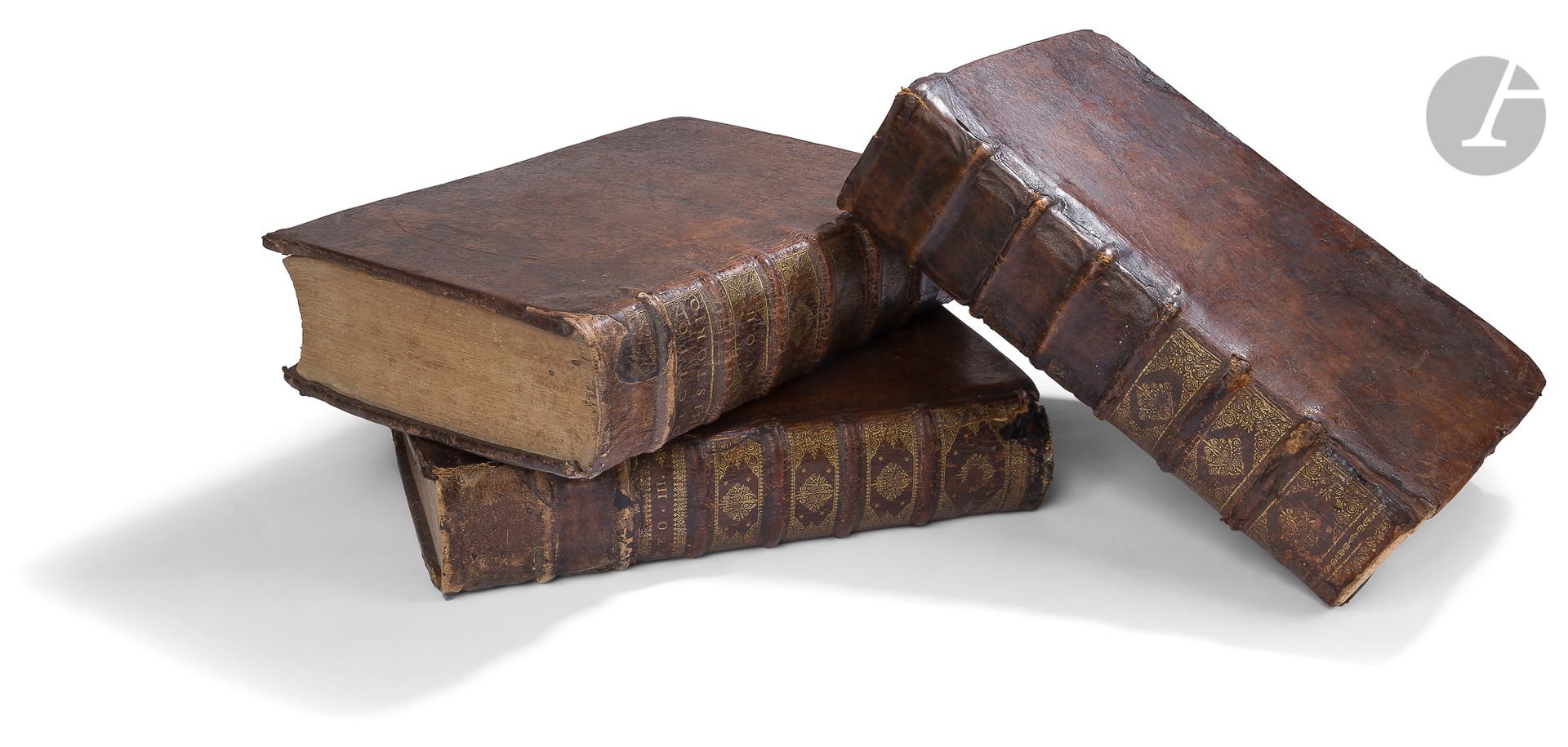Description
Louis MORÉRI Le Grand dictionnaire historique ou Le Mélange curieux de l'Histoire sacrée et profane Three volumes in folio: - Volume I and II, 1967, with annotations in pen (Carmes du Guildo 1687) - Volume III, 1689, with ex libris Monrÿ Bound in calf. Spine ribbed (wear). B.E. Le Grand dictionnaire historique, ou Le Mélange curieux de l'histoire sacrée et profane, was first published in Lyon in 1674 in one volume. It contains mainly historical and biographical articles. Moréri dedicated it to Gaillard de Longjumeau, then bishop of Apt, a town where he was appointed chaplain. To simplify, it is the first great French dictionary of proper names. The former convent of the Carmelites of Guildo located in Créhen in Brittany, whose foundation was authorized by letters patent of April 4, 1621, succeeded a collegiate church founded by Charles de Dinan at the beginning of the 15th century for the reception and assistance of the poor and pilgrims. A building dating from the middle of the 17th century remains from this convent.
1
Louis MORÉRI Le Grand dictionnaire historique ou Le Mélange curieux de l'Histoire sacrée et profane Three volumes in folio: - Volume I and II, 1967, with annotations in pen (Carmes du Guildo 1687) - Volume III, 1689, with ex libris Monrÿ Bound in calf. Spine ribbed (wear). B.E. Le Grand dictionnaire historique, ou Le Mélange curieux de l'histoire sacrée et profane, was first published in Lyon in 1674 in one volume. It contains mainly historical and biographical articles. Moréri dedicated it to Gaillard de Longjumeau, then bishop of Apt, a town where he was appointed chaplain. To simplify, it is the first great French dictionary of proper names. The former convent of the Carmelites of Guildo located in Créhen in Brittany, whose foundation was authorized by letters patent of April 4, 1621, succeeded a collegiate church founded by Charles de Dinan at the beginning of the 15th century for the reception and assistance of the poor and pilgrims. A building dating from the middle of the 17th century remains from this convent.
